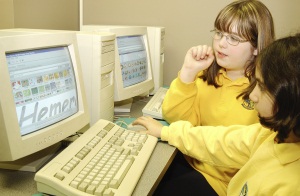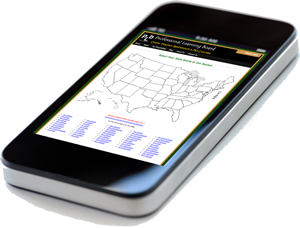What are Flipped Classrooms?
Posted by PLB Blogger · 5 Comments

 You might have heard about a flipped classroom and wondered what it was. In fact you might have even done it, and may not know that you used this strategy. The flipped classroom provides avenues for teachers to become facilitators of learning and move away from the sage on a stage approach to teaching. The foundational concepts of instructors guiding students or facilitating their progress are based on the idea that the instructor is no longer at the center of the interaction and application of knowledge. There are many variations of how a flipped classroom operates, but most involve the pre-recording of presentations, the viewing and hearing of what is happening and why, as well as the directing to student to varied resources or tasks. This can be done at all grade levels to varying degrees.
You might have heard about a flipped classroom and wondered what it was. In fact you might have even done it, and may not know that you used this strategy. The flipped classroom provides avenues for teachers to become facilitators of learning and move away from the sage on a stage approach to teaching. The foundational concepts of instructors guiding students or facilitating their progress are based on the idea that the instructor is no longer at the center of the interaction and application of knowledge. There are many variations of how a flipped classroom operates, but most involve the pre-recording of presentations, the viewing and hearing of what is happening and why, as well as the directing to student to varied resources or tasks. This can be done at all grade levels to varying degrees.
Given below are several strategies. The first section consists of strategies that you can use if you are using this strategy for the first time. The second section consists of strategies that you can use at a later stage.
Getting Started…
- Capturing Live Presentations:
The instructor turns on Camtasia and uses the Smartboard while doing the class presentation. This includes the questions of students in the classroom. The instructor then edits out the non-pertinent stuff and makes the video. The instructor does this for each class this year with the intent of using it next year in the second step of developing the flipped classroom. Camtasia cam.rec files are saved for future use. The video was available for absent students. (This was a physical science instructor).
- Make Videos-A day or two ahead of students:
The instructor makes the video the day/or short time before student use. Videos are made available to students and they are to watch them prior to coming to class. Upon coming to class students work on the problems related to the video. Students may work in groups or individually while the instructor circulates answering questions, assisting in getting materials, and evaluating the work. A chart monitors student progress. The instructor is very busy dealing with students, each who is at a different point in the learning process. Videos, which are sometimes instructions for various tasks, are on the school website as they have yet to move to Moodle, ( an educational delivery system) which they plan to use in the near future. Deadlines have to be set for the student for defined time periods. Instructor gives mini impromptu explanations to students as needed (This was a chemistry instructor)
As you grow in experience:
- Using Instructor Movies-Semester/Year Lesson Plans Done:
The instructor makes their own movies of the information to be considered before class and has videos for the entire year’s lesson plans. The students have access to the videos on a site accessible to them regardless of their physical location, school or home. The format is almost an independent study type of approach. The student may work singularly, or with others, going through the content. The instructor makes themselves available to assist in explanations and get needed materials for the student. As always, they provide remedial activities as needed for students as called for. Deadlines need to be made regarding the taking of tests, completion of projects, etc. (This was a math/algebra instructor)
- Using Instructor Pre-Made materials, Semester/Year Lesson Plans with an Educational Delivery System Incorporating Outside Resources.
Multiple components are present at this stage. The instructor has the pre-made materials, as noted above, but incorporates an educational delivery system such as Moodle to provide multiple learning options made available by that software. This would include quizzes, collaboration activities with others inside and outside of the face to face classroom, etc. Additional resources would easily be noted as would other learning activities via worksheets, videos, wikis, etc. Student quests, research as well as advanced explanations of content could be made available. Students learn to use the instructor as a resource contacting them in a face to face manner as well as via the other digital means available to them.
There are many pros for the student who has to take more responsibility as a learner. The instructor’s greatest pro has to be the improved ability to work with students needing the help while coaching the independent learner. There are of course cons to this approach, and many of those involve the instructor being willing to teach from varied places in the classroom instead of from the front when students are in the sit and listen position. At a recent conference that I attended, two of the three team presenters noted it is very difficult to let “control” go.
A well-organized flipped class for the good student may not need much individual attention and the class becomes similar to that of an online course. Primary technological tools are needed to implement this strategy. At the highest level, the interactive television courses, become facilitators for students in various locations rather than solely sit and soak-it-in sessions. Efficiency in presentation and in student learning will expedite the educational process for the student.
Additional Resources:
http://www.edutopia.org/blog/flipped-classroom-ramsey-musallam
http://digitalsandbox.weebly.com/flipped-classroom.html
How is the flipped classroom more relevant and effective for the students of today?
Article contributed by Joe Joerger
Learn More….Take a course: Technology in the 21st century classroom




Article Referenced is by NASSP’s 2012 National Digital Principal “Flipped Classroom Defined”
If you are interested in establishing Information on the flipped classroom or mike’s newest model on the elaborative learning model please contact him. Excerpts from his website are posted below,
The flipped classroom provides avenues for teachers to become facilitators of learning and move away from the sage on a stage approach to teaching. The foundational concepts of instructors guiding students or facilitating their progress are based on the idea that the instructor is no longer at the center of the interaction and application of knowledge. The instructor remains available to students as a facilitator of resources, a resource who should frequently check students for understanding for their learning. The teacher, when necessary will provide guidance in how to process the information for a unit of study. The facilitators role in a flipped classroom changes dramatically in that the teacher becomes a source to students in how to better use the resources, process information and how to apply the core concepts to real life situations.
http://digitalsandbox.weebly.com/flipped-classroom.html